The White Ironstone China Association (WICA) held its annual convention in Cleveland this year, so we trekked over to take a look at a slew of 19th-century white dishes that might strike you as looking a lot alike. But dedicated collectors notice even the minutest differences, and we want to help you see the differences, too.
What is ironstone china? It’s an opaque stoneware resembling porcelain and supposedly containing iron slag. It was patented by Miles Mason and his son Charles in 1813, but the patent was not renewed and other potters were convinced that a mineral other than iron was used. But the name has stuck now for nearly 200 years.
We took photos of a few of the dishes that were on display, most made between 1853 and 1871 by Elsmore & Forster of Staffordshire, England. Many other English potteries and a few American firms also made white ironstone dishes.
Take a close look at the pictured pieces. Notice the differences in body shape and molded design. Dedicated WICA members do an immense amount of research on their favorite wares—so much so that we’re ready to grant them Ph.D. degrees in White Ironstone. They publish a quarterly newsletter, White Ironstone Notes, that features lists, photos and line drawings of shapes, including those with small colored decorations, like Tea Leaf ironstone
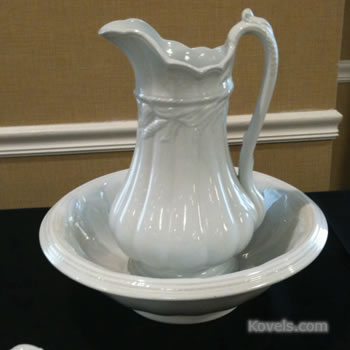
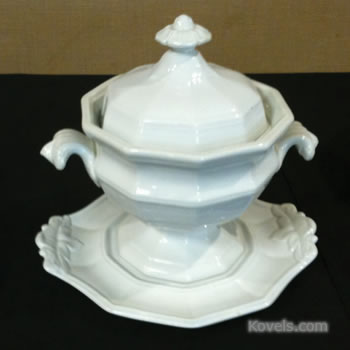
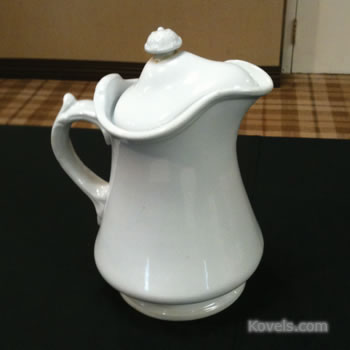
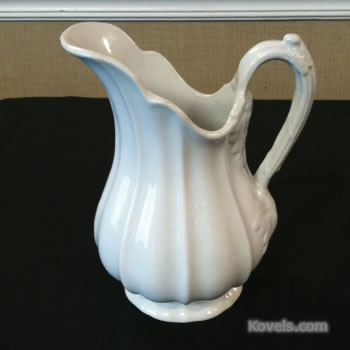
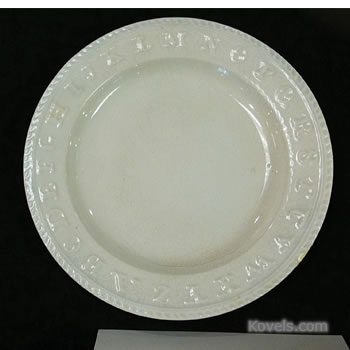



Where do I find prices for white Ironstone?